DISCOVER SOME OF THE CHATEAUX AND MONUMENTS SOUTH OF BORDEAUX
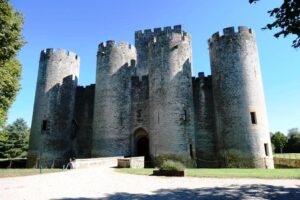
When we think of French châteaux, we tend to think, first and foremost, of the Loire Valley . If you have explored those many glorious palaces in their magnificent garden settings, and love the idea of doing a châteaux-focussed trip elsewhere in France, may I strongly suggest you consider at least some of the huge number in the Gironde region just south of Bordeaux. Unlike most of the Loire châteaux, many of those in the Gironde started off very much as fortresses before becoming splendid residences for royalty, the aristocracy and the occasional Pope. Today, many are open to visitors, and all are magnificent!
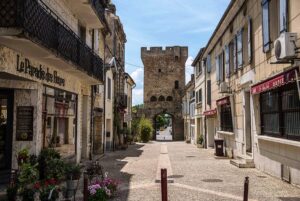
We based ourselves in the most delightful bastide town of Cadillac that was built in 1280 and fortified in the 14th century on the right bank of the river Gironne. It lies just 40 kms south of Bordeaux and proved to be the perfect base from which to explore the countryside in and around the Garonne. We were aware of a few châteaux in the area, but we were astounded by just how many there are, and aside from the famous vineyards of the region, how little known this culturally rich landscape is to many travellers.
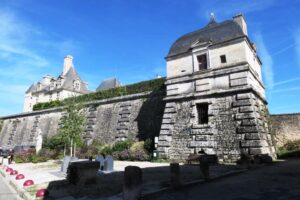
Cadillac’s main claim to fame is its imposing, fortified château, around which the small bastide town grew. Dating from 1599 during the reigns of Henri IV and Louis XIII, the château was built on the remains of an earlier one from the 1200s, and remnants can be seen in the walls of the rampart and the dry moat.
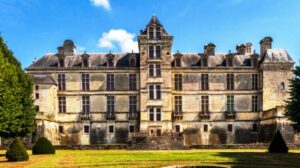
This château combines splendour and military pomp. Much of its sumptuous interior decoration has been preserved, including monumental fireplaces, tapestries and painted ceilings. The château came to be a symbol of the power of its owner, Jean-Louis Nogaret de la Valette, who experienced a dazzling rise to become the first Duke of Epernon, and referred to as “King in all but name.” The château received Louis XIII, Anne of Austria, Richelieu, Mazarin, Louis XIV. It served as a women’s prison from 1818 to 1952, then became a psychiatric hospital, before eventually falling into disuse.

The property was bought by an Australian couple, Richard and Shelley Serisier, in 2004. Mr Serisier’s ancestors migrated to Australia from Bordeaux in 1839, and as he says, it seemed appropriate that they committed to undertake the massive restoration project, both of the château itself and its vineyards, which had deteriorated from long time neglect.
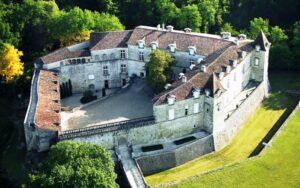
A little less than half an hour south of Cadillac is the Château Royal de Cazeneuve. This medieval fortress was the former residence of the kings of Navarre, and belonged to Henri IV. Due to financial problems, the king eventually sold it to the Duke of Albret in 1583. In the 17th century, the building underwent a major overhaul. The medieval château was then transformed into a pleasant, more liveable residence. Its interiors are absolutely beautiful. The château still belongs to the descendants of the d’Albrets. The château’s 40 hectare wooded park and gardens run alongside the river Ciron and includes a lake, a mill, the château’s wash house and a bird island habitat.
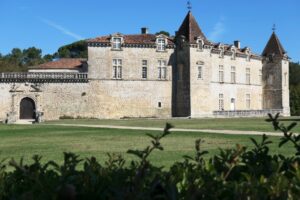
These days, visitors can visit the beautifully furnished royal apartments, the weapons room, the trophy gallery, the kitchens and medieval cellars as well as large, vaulted galleries on the ground floor decorated with beautiful Aubusson tapestries.
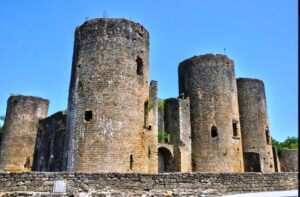
A little further on lies the very impressive ruins of the Château de Villandraut on the edge of the village of the same name. This enormous palace-fortress was constructed in 1305 on the orders of Pope Clement V, a native of the area, just one year after his accession to the papacy. When you arrive, you are struck by the overwhelming presence of the impressive defence system and the massive towers 20m high which loom over you. After crossing a stone bridge that spans the wide moat, you enter an internal U-shaped courtyard. Internally, there is still evidence of sophisticated comforts such as the latrine system. The sarcophagus of Clement V is in the church of the nearby village of Uzeste.
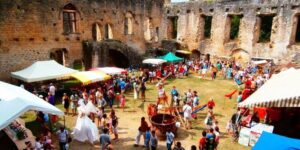
The château also hosts equestrian events, exhibitions, concerts, and theatrical performances, including a medieval “Jesters’ Festival” held from late March to the first week of April.
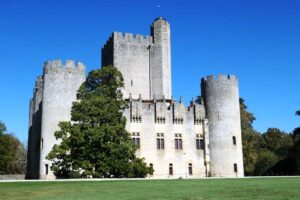
Just 12 kms from the Château de Villandraut lies another magnificent fortress château, the Château de Roquetaillade. With permission of the English King Edward I, it was built in 1306 by Cardinal de la Mothe, nephew of Pope Clement V. The visitor will discover ramparts, 6 solid towers, dungeons and a chapel, as well as the impressive château itself. It’s the most visited chateau in the Bordeaux region, and has been lived in by the same family for over 700 years.
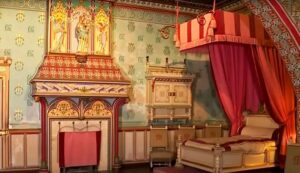
Set in picturesque grounds on the banks of a stream, the château itself was totally restored in the 19th century by the famed architect Viollet le Duc, who was also commissioned to redecorate it to make it more liveable. He created the château’s extraordinary interior decorations, including a magnificent staircase and elegant bedrooms.
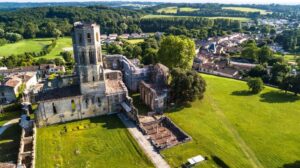
The countryside around Cadillac is lovely. Gentle, rolling hills, with lush vegetation along with grain crops such as wheat, and of course, vineyards. Pretty villages are dotted everywhere, inviting a slow drive through or a stroll, even if there is no particular monument or special site to explore. One destination that, for us, was very much worthwhile visiting was the ruined Abbaye de la Sauve-Majeure on top of a hilly landscape at the village of La Sauve. A little under 20kms to the north of Cadillac and 25 kms from Bordeaux, it’s one of the most impressive ruins in the entire region and was listed as a UNESCO World Heritage site in 1998 as part of the pilgrimage route to Santiago de Compostella.
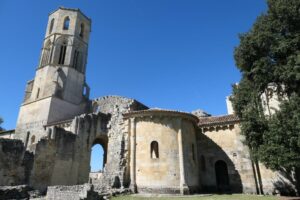
Founded in 1079, its remains are a testimony to medieval architecture, and a masterpiece of Romanesque art. It is renowned for its remarkable sculpted capitals and a dramatic bell tower, which can be seen at some distance. This 1,000 year old abbey is set in a timeless open-air landscape, between the Garonne and Dordogne. In the region known as the Entre-Deux-Mers, the abbey takes its name from the large forest, or Silva Major, which characterised the area when it was founded. It’s the perfect definition of the “romantic ruin”. The former Benedictine monastery was founded by the Duke of Aquitaine, and housed, at its peak, some 300 monks. Under the Duke’s protection, the abbey became very powerful economically and politically, increasing its dependencies and possessions not only in Aquitaine, but throughout France and Europe.
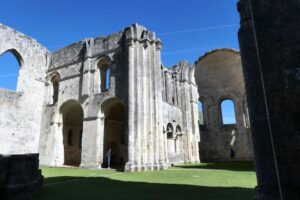
However, with the end of the Hundred Years’ War, the abbey’s influence and powers fell into sharp decline. After the Revolution, it even served as a prison, and unfortunately also as a stone quarry. Luckily, the remains were classified as a Monument Historique in 1840. The abbey, its cloister and large park, constitute a beautiful, peaceful setting. Also take your time having a look at the adjacent wine house in the abbey’s old barn, and its medieval garden before heading into the small museum space which ends your visit.
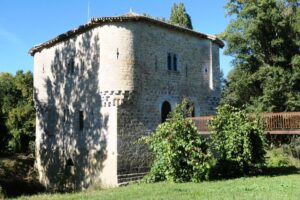
Driving leisurely through the beautiful countryside of this region we often came across tantalising signs to sites or villages we’d never heard of, and barely rated more than a small dot on our trusty Michelin map. One such sign pointed to a fortified 14th century mill and Romanesque church just 200m outside the village of Bargas. Well, of course, given its proximity and with such an enticing description, we could hardly ignore it.
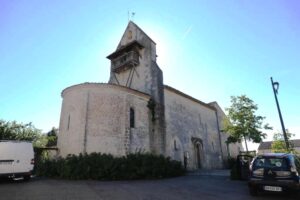
At first sight, it didn’t look like any sort of mill we’d ever seen before. Rather, it resembled a small, square fortified stone manor built over a stream with a connecting timber bridge to the river bank. It had a few small windows and long, thin, narrow slits in the walls, such as those used by archers to fire arrows through. Perhaps such defensive measures had been necessary when the mill was constructed in the 14th century, given the history of wars and armed conflicts, such as the Hundred Years’ War, particularly in the southern regions of the country. The small Romanesque church just up the road also had clearly been built with the need for defence in mind.
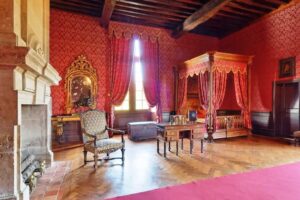
There are so many relatively unknown yet fascinating places to explore in this part of the country—so many more fortified châteaux, charming little bastide villages, impressive churches, and of course, not forgetting some of the world’s most prestigious vineyards. I’ll look at some more of them in the next story. Let me know if you’d like any specific info., or have a favourite village or site you’ve visited.
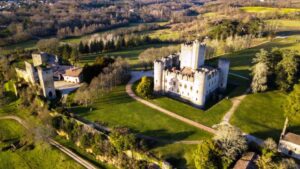

Amanda Menogue
Excellent review of this area.
Love to read all about these interesting destinations . Congratulations.
Cheryl Brooks
Hi Amanda,
Thanks for your warm words of praise–absolutely delighted that you enjoyed the story. It’s an interesting area, and one we thought we knew reasonably well–Wrong! It has so much more to offer than we realised, and we certainly intend to return some day soon. The landscape alone is one that you can’t whiz through in a hurry, as around (almost) every corner there’s something unexpected! Watch out for the next story, as I add a bit more to that area–and still yet more to uncover one day!
Best regards, Cheryl